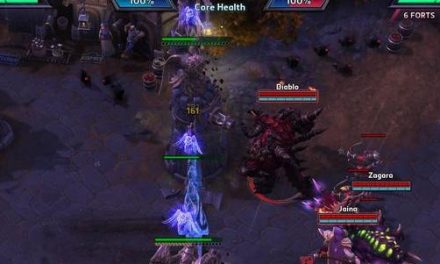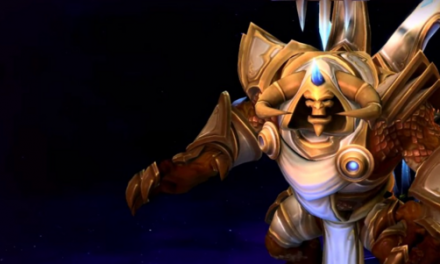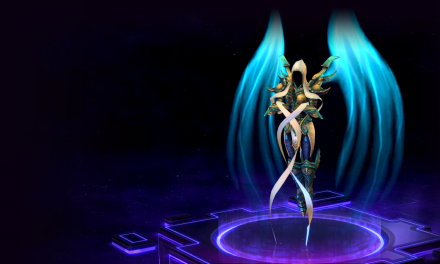Some characters are designed to take a lot of punishment, others to support and bolster defenses. Some wade into melee with wild abandon to assassinate unprotected targets. And then there are those select few who pull at the threads of magic, weave them into a blanket of pain, and smother their opponents with unadulterated glee. That’s right, today I’m talking about some of the most powerful Mages in Heroes of the Storm.
There are many different ranged damage-dealers, each with their own unique abilities and play-styles, and even narrowing down the field to “mages” doesn’t do a lot to diminish the number. In almost every match I play however, several voice lines are recurring themes: “Bask in my Glory!” and “Selama ashal’anore!” – words uttered by the heroes Gul’Dan and Kael’thas, respectively. Other mages like Li-Ming, Jaina, and Chromie are certainly worth mentioning, but of all of HOTS’ mages I have the most experience with these three, and feel they form a good baseline when it comes to measuring others in the same class.
Mages tend to die almost immediately to any targeted pressure, and are high-value targets due to their outgoing damage potential. Knowing their strengths and weaknesses, as well as common trait builds, will go a long way to making any time spent playing one as rewarding as possible — and by that I mean doing an inordinate amount of damage to the enemy team.
Gul’dan
A broken, twisted ork who annihilated his own village with demonic flame, Gul’dan often utilizes one of two specific build paths, aimed at boosting the power and efficacy of Corruption or Fell Flame, two of his basic abilities. What makes Gul’dan a very unique character among the mages is that he does not regenerate mana over time, instead sacrificing his own health to fuel his magical onslaught. The ability to drain life from other creatures gives him enormous staying power, as the lack of a healing fountain isn’t necessarily a limiting factor when he duels another hero. A good Gul’dan player is constantly evaluating whether the trade of health for mana is worth it, particularly before a fight initiates and the need for raining immediate destruction is high.
Corruption emits three damaging pools in a line, dealing a fair amount of poison damage to any who get caught within it. With a long cool-down this skill is often best used as enemies are retreating, as their straight-line flight will often allow all three pools to hit them in sequence. If the Corruption-specific level 1 quest talent is chosen, after hitting 40 heroes the pools of corruption will spread out and then return, greatly increasing the amount of damage for anyone in the immediate area. Combined with other talents that increase damage for those hit with multiple pools, going fully-Corruption build means that when the skill is available, it’s an absolute killer.
While I’m less familiar with the Fell Flame build, the ability for the quickly-casting spell to hit a large area (and larger again once a specific quest has been completed) with a low cooldown makes it a very attractive choice for those who want to focus on wave clearing or removal of groups of enemies in a wide area. Not only will going this route reduce other cooldowns, it also means that Gul’dan is more versitile — Corruption only affects foes in a particular, narrow area, while Fell Flame has a much broader and generally-applicable field of effect. As much fun as a fully-traited Corruption is, there’s a reason Fell Flame is a very popular choice for those who look to support their team more than many other mages can.
Kael’thas
While Li-Ming literally has a talent called “Glass Cannon,” KT isn’t far behind her when it comes to a high risk/reward playstyle. All of his skills are useful in a variety of situations, and his ability to overcharge them by enabling Verdant Spheres should never be overlooked. Being able to punish enemies that group up as well as isolate foes who strike out on their own, KT can generate a large amount of damage and kills for his team in a very short time. For this reason, he’s often the first one targeted in a skirmish, even above the healers.
Living Bomb is a great skill which applies a damage-over-time effect to an enemy, culminating in a small blast. Any heroes caught in the blast get Living Bomb applied to them as well, and in high-level games, this effect can continue infinitely. For that reason teams facing KT need to be very cognizant of anyone burning, lest they all go down together. Putting a bomb on a hero retreating behind the safety of towers may just be the perfect carrier for a very unpleasant surprise. With talents to increase the range of the blasts and increase secondary explosion damage, Living Bomb is a very viable trait line that relies more on exploiting enemy placement than careful positioning to be successful.
At level 1, KT players have the option of taking a talent called Convection, which increases the damage Flamestrikes do to enemies each time it hits, until he dies. If he’s able to hit 20 heroes with Flamestrike before dying however, the bonus is not lost. Building to make Flamestrike his primary source of damage immediately necessitates a nearly-team-wide change in playstyle, as KT is severely crippled if he can’t reach 20 hits in a single life. That means it works best on tight, narrow maps where enemies have to clump up (such as Tomb of the Spider Queen, Infernal Shrines, or Garden of Terror), and rewards a very, very conservative playstyle that limits his exposure to enemy forces. With later traits causing greatly increased damage, advanced range, or lowering skill cooldowns, the Flamestrike build becomes very powerful as the game progresses.















